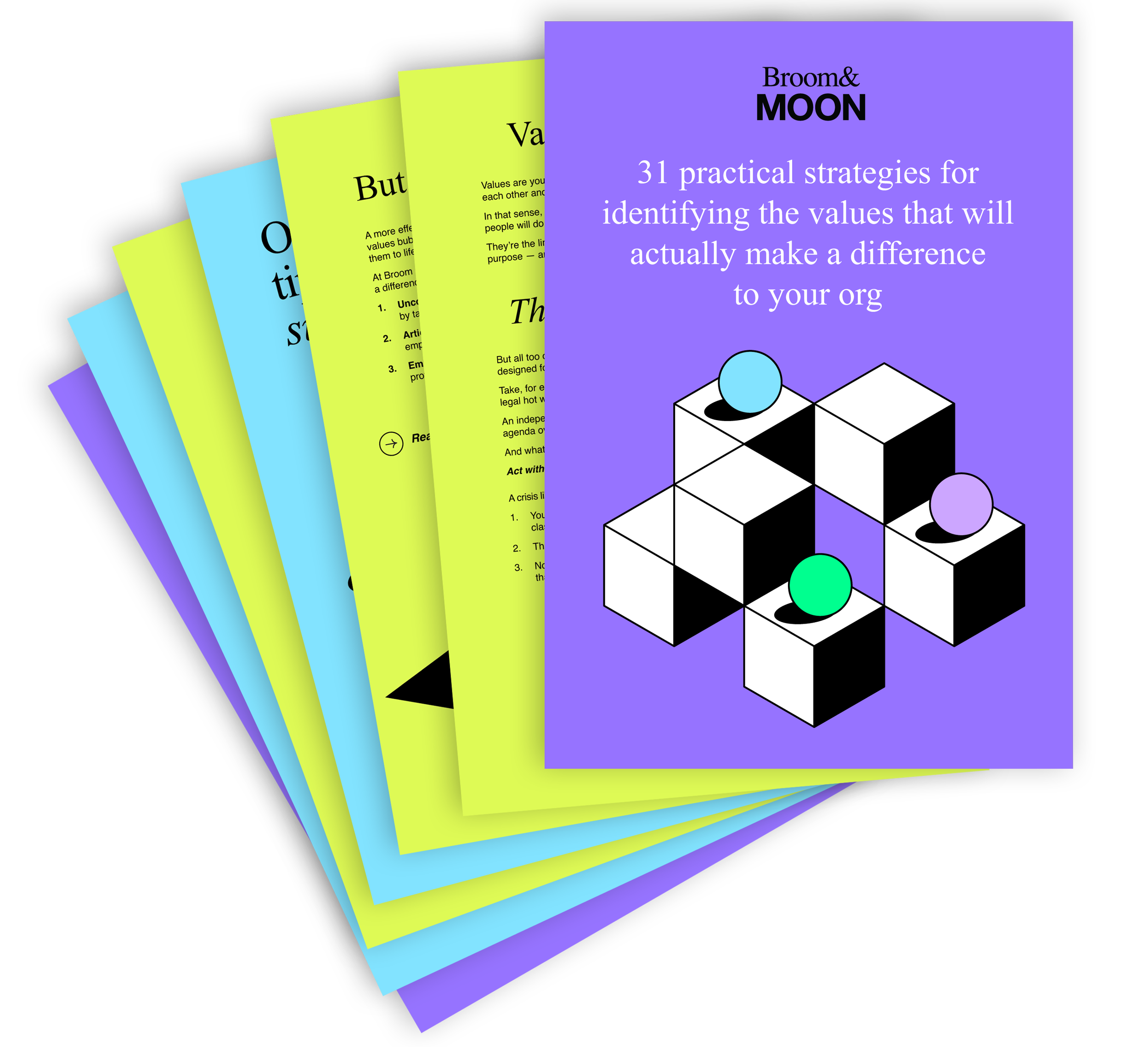The art and science of brand language
Which of the two shapes above is a bouba and which a kiki?
Both words are made up, by the way — so what we really mean is which one looks and feels like a bouba and which one looks and feels like a kiki?
We’re guessing that for you, like us, the shape on the left is the kiki and one on the right the bouba. In an experiment, 95% of subjects presented with these images said the same.
Why is that?
In short, sound symbolism. The tendency in many languages, including English, for people to associate the sounds of words with the things those words refer to.
Bouba sounds as soft as it looks. Kiki as spiky.
It might be because of the shape we make with our mouths when saying them. To say bouba you bring your lips together, as if in a soft kiss. Kiki, in contrast, is harsh and gutteral.
Another reason might be the shape of the letters: Bs and Os have a roundness about them, while K’s look sharp.
Why are we telling you all this? Because, as brand language experts, we really sweat this stuff.
Whether it’s coming up with your name or your tagline, we’ll think about not just what the words mean, but how they sound to the ear. How they look next to your logo.
In that sense, brand language work is not unlike poetry. Both are about capturing an idea in the perfect handful of words, and caring about the rhythm and shape of those words in the ear and on the page.
Take the brand positioning work we did for our client, Sapia. Their target buyer is the progressive Chief HR Officer for businesses where hiring great people contributes massive brand value.
Our research revealed that a major concern for this target buyer is creating a culture of belonging for their employees. These insights inspired the tagline we came up with for Sapia:
When we first presented this tagline to the client, we urged them to take notice of all those initial Bs and Ps. They’re like a series of soft kisses that say “warm and welcoming”.
Compare that line with a brand like Kodak.
Those Ks aren’t just onomatopoeic (calling to mind the clicks of a camera). They also, perhaps, suggest the sharpness of the camera’s resulting images.
Or, perhaps, Coca-cola, which is still a more successful brand than its rival Pepsi.
Could one reason be that Coca-cola’s very name is produced in the throat, not on the lips? A subtle nod to where the product’s thirst-quenching zest will have most effect?
In a similar vein, the world’s biggest cigarette brand, Marlboro, contains two “kissy” sounds — M and B. Is that a subliminal reminder to the buyer of where they’ll feel the physical pleasure of using the product?
Such overtones may or may not have been intentional when the brand launched in 1846, but the enduring nature of the brand name indicates there’s huge value in landing on the right words and sounds to describe your business.
And, incidentally, huge value in getting a human to do it for you.
Because it’s not simply that Chat GPT is built to replicate cliché.
Chat GPT also doesn’t have lips. And a throat. And an instinctual, bodily sense of the feeling a word creates.
And nor can it justify and explain every linguistic choice it makes, like we at Broom & Moon do with every piece of work we do.
Talk to us about your brand language.
Related articles


